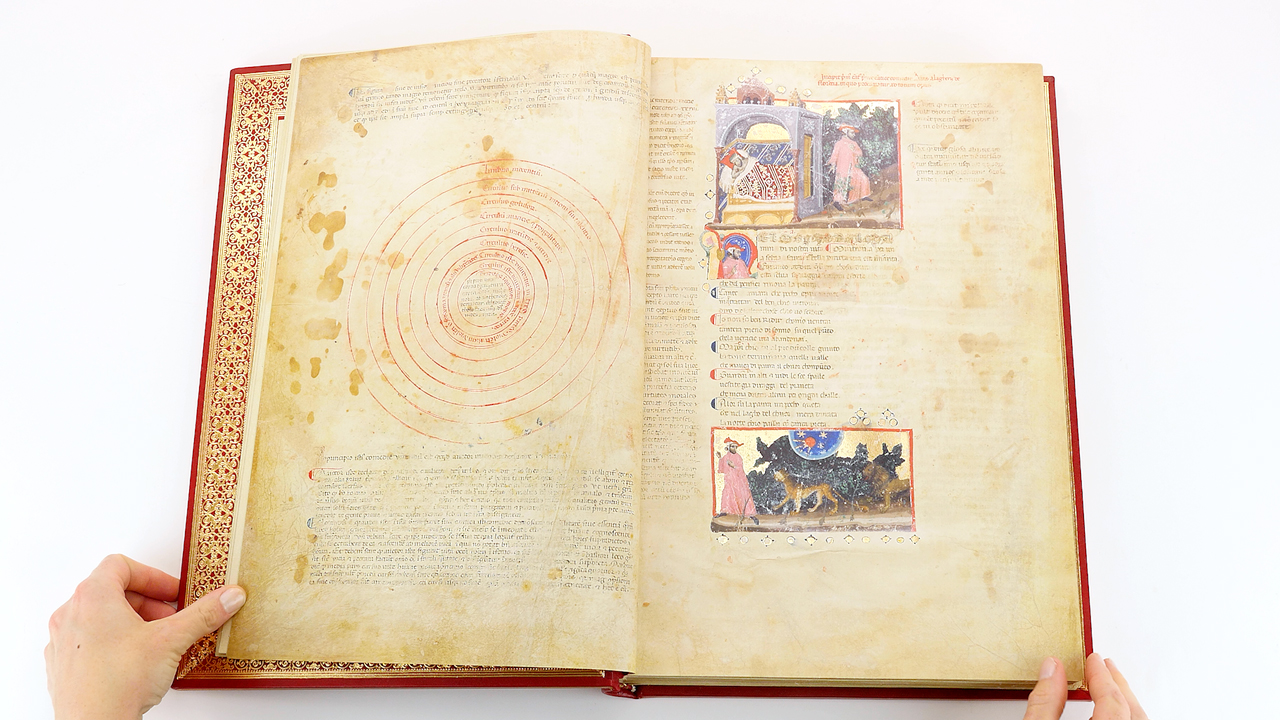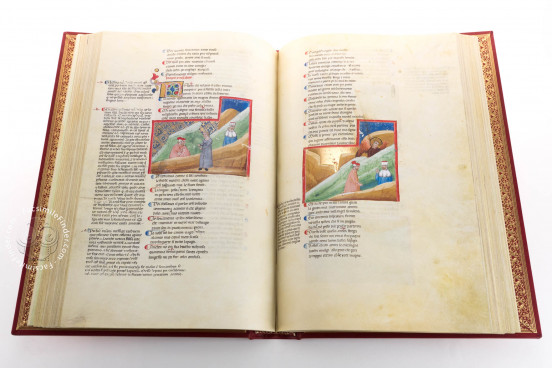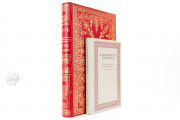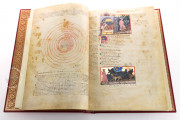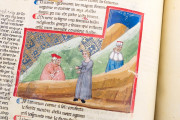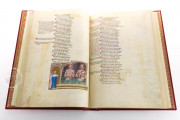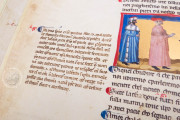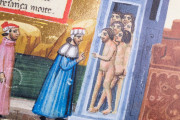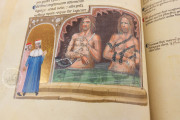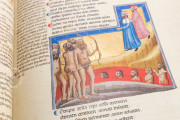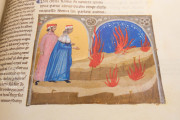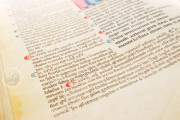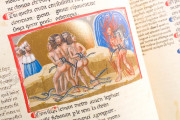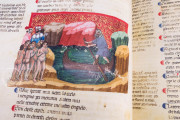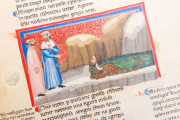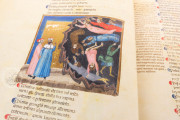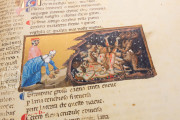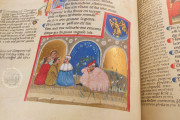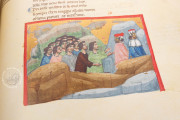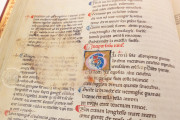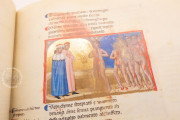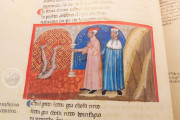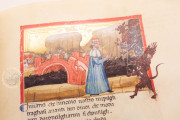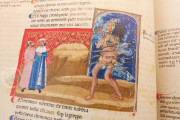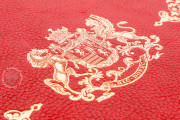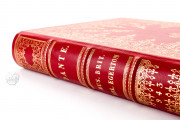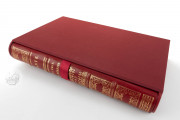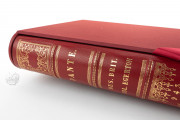The Egerton Manuscript is the earliest surviving fully illustrated manuscript of the Divine Comedy, the masterwork of the Italian poet Dante Alighieri. It was created in Bologna or Padua around 1340. Its 247 miniatures are the work of the Master of the Antiphonals of Padua. There are also three historiated initials with author portraits, two diagrams, and a map. The miniatures vividly depict the characters and events described in the poem, a journey through the underworld undertaken by the poet and his guides—the ancient Roman poet Virgil and a young woman named Beatrice.
Dante's long (14,233 lines) Christian moralizing poem is divided into three cantiche ("canticles"), a designation meant to evoke the Bible. Those canticles—Inferno, Purgatorio, and Paradiso—are, in turn, divided into canti ("songs").
A North Italian Master
Trained in Bologna, the Master of the Antiphonals of Padua was active in both Bologna and Padua. His painting betrays the influence of the art of Giotto, whose frescoes in Padua the master surely knew. His miniatures in the Egerton Manuscript resemble Giotto's frescoes in picturing the protagonists enacting the narratives before minimally defined landscape and architectural settings.
The Poet and His Guides
Through most of the first two canticles, Virgil leads Dante. Since the pagan Virgil cannot enter paradise, Beatrice—who personifies Christian divine love—takes over his role as Dante's spiritual and physical guide as the poet nears the celestial spheres. The poet and his guide customarily appear in the miniatures.
Each character is depicted in distinctive garb: Dante in an unbelted pink robe and a red headdress; Virgil in a blue robe with an ermine collar; and Beatrice in a red tunic with a green cape and a white veil. Virgil wears a red cap with ermine trim, much like the headgear of contemporary university masters.
Circles of Hell and Spheres of Heaven
At the opening of the first canticle is a full-page diagram of the nine circles of hell, each labeled (fol. 2v). A similar diagram precedes the third canticle; it charts the nine spheres of heaven (fol. 128v). These set the stage for the coming sections of the poem, but the painted miniatures truly bring the poem into visual form. The punishments accorded sinners in hell are especially vivid.
The Formal Script of Italy
The manuscript was written by two scribes in Gothic Rotunda, the formal text script of Italy at the time. The poem is written in a single column near the center of the page. Each canto opens with a decorated initial, and each tercet (three-line stanza) is marked by a paraph (paragraph mark), alternating between blue and red. Latin-language glosses providing commentary on the poem are written at the sides of the central column of poetry. A concise guide to its allegorical interpretation by the poet's son Jacopo follows the glossed poem (fols. 187r-188r).
An Alphabetical Key
The glosses appear in proximity to the passages in the poem they explicate, but there is also a system for coordinating text and commentary more precisely. Each bit of commentary is marked with a letter of the alphabet (written in red), and the appropriate letter (again in red) appears between the lines of the poem right above the word or words being explained.
Purchased by the British Museum
We know nothing of the book's early history. Baron Franz von Koller (1767-1826) owned it in the early nineteenth century. In 1842, the British Museum purchased the manuscript for its library with income from the Bridgewater Fund established by Francis Henry Egerton (1756-1829), Earl of Bridgewater. The manuscript was transferred to the British Library upon its establishment in 1973.
We have 1 facsimile edition of the manuscript "Divine Comedy - Egerton Manuscript": La Divina Commedia. Il codice Egerton facsimile edition, published by Istituto dell'Enciclopedia Italiana - Treccani, 2015
Request Info / Price
